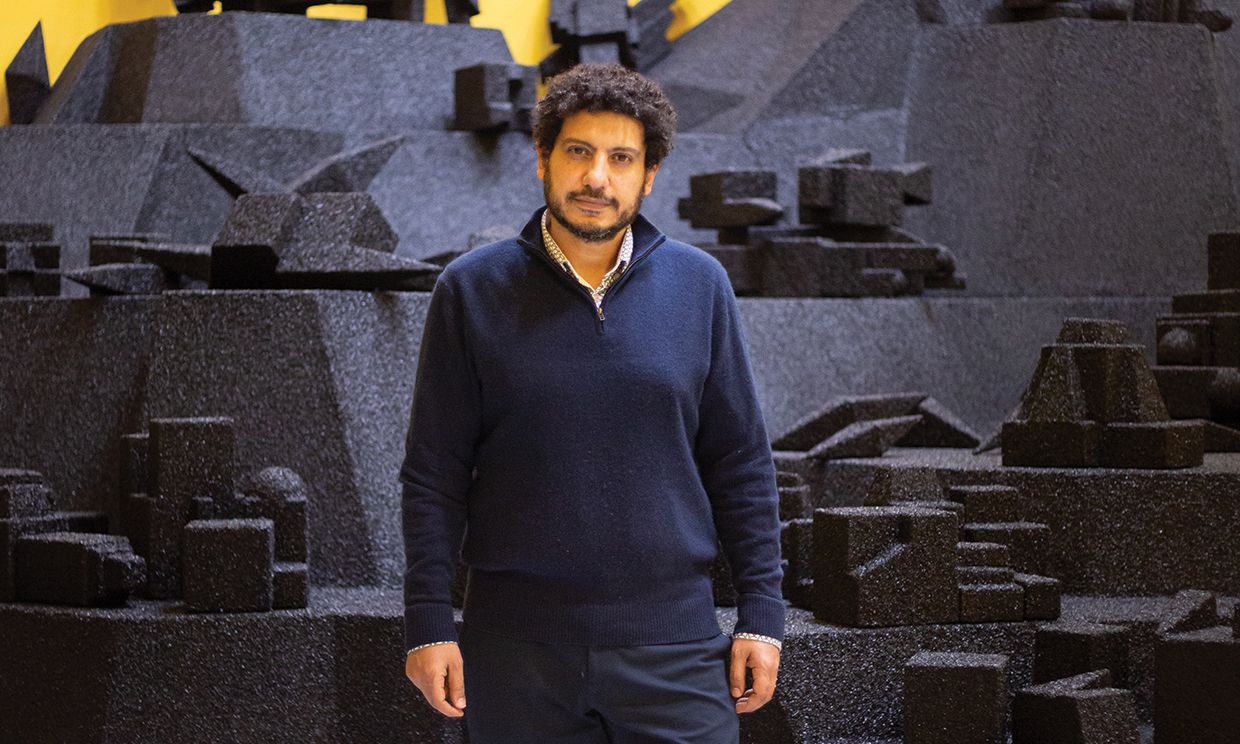Wael Shawky says that the large-scale undertaking for his Biennale video would have been “impossible in a place other than Egypt, or even Alexandria” Photo: Lien Wevers
Wael Shawky will represent Egypt in its national pavilion, in a homecoming for the internationally acclaimed artist who has shown rarely in Egypt for the past ten years.
“I accepted this invitation in response to the changes that are happening in the world,” says the artist, whose work investigates historical narratives. “I’m not only talking about the Arab world—there is wider injustice that it is important to address. For me it started with the Russian-Ukrainian war, and it became clear that there is an end to the global system coming somehow—or that a new era is about to begin.”
Since the 2000s Shawky has been one of Egypt’s most prominent artists. He opened an art school in Alexandria, where he lives, and his performances and videos have appeared at Documenta, the Sharjah Biennial, the Museum of Modern Art in New York and at other venues around the world. However, since the closure of the independent exhibition space the Townhouse Gallery in Cairo, and the 2011 Egyptian Revolution, he has kept a lower profile in Egypt itself.
While the subject of his Venice presentation, the video Drama 1882, takes place in Alexandria, Shawky has turned to it because of its global significance as one of the first episodes of anti-colonialism.
The video recounts the story of the Urabi Revolt, which was sparked in 1882 when a military officer, Ahmed Urabi, led Alexandrians in a skirmish against the British powers. It left around 250 to 300 people dead and formed the backdrop to the Istanbul Convention, in which North Africa was carved up among the European colonial powers and resulted in the British hardening their military control over Egypt.
“Whether Urabi is a hero or traitor depends on who wrote this history,” Shawky says. “I like this vague point in history, which you can use as more than facts. So I was interested to work with performers and to think of history as theatre. You have the written history, but you also work with it as a human creation.”
Shawky’s team is independent of the country’s ministry of culture, he says, adding that the ministry even asked the Egyptian Academy of Arts in Rome, which technically oversees the pavilion, to give him the keys to the pavilion in a symbolic gesture.
Despite Shawky’s international status, the commission also points to the precarity and financial pressure that a Venice pavilion comes with in countries that do not have generous public funding. The onus of production, fundraising and logistics has fallen entirely on the artist, who has appointed a team that raised the funds for the pavilion from private patrons in the country, all of whom supported the Venice Biennale for the first time. Shawky’s four representing galleries, Lia Rumma, Barakat Contemporary, Sfeir-Semler and Lisson, are also providing funding and logistical support.
However, Shawky underlines the extraordinary experience of pulling together to make the large-scale project. He worked at the open-air theatre in Alexandria with a cast and crew of 400—students, actors and young artists—over the course of four months, directing a live performance to transform into the video.
“It would be impossible to make this in a place other than Egypt, and even other than Alexandria,” he says of his hometown. “The cultural field has a hunger for any project where they can really get involved.”

